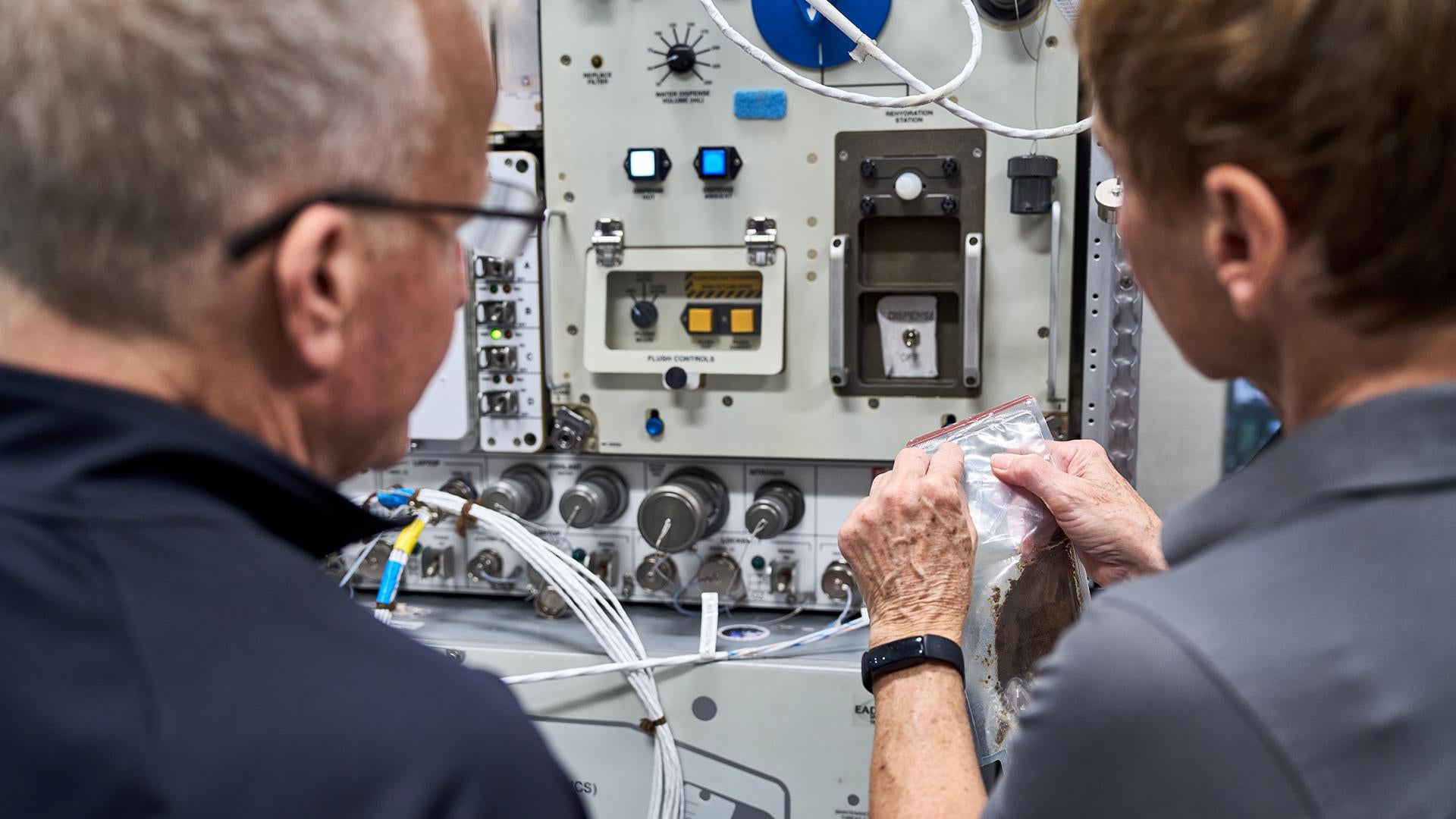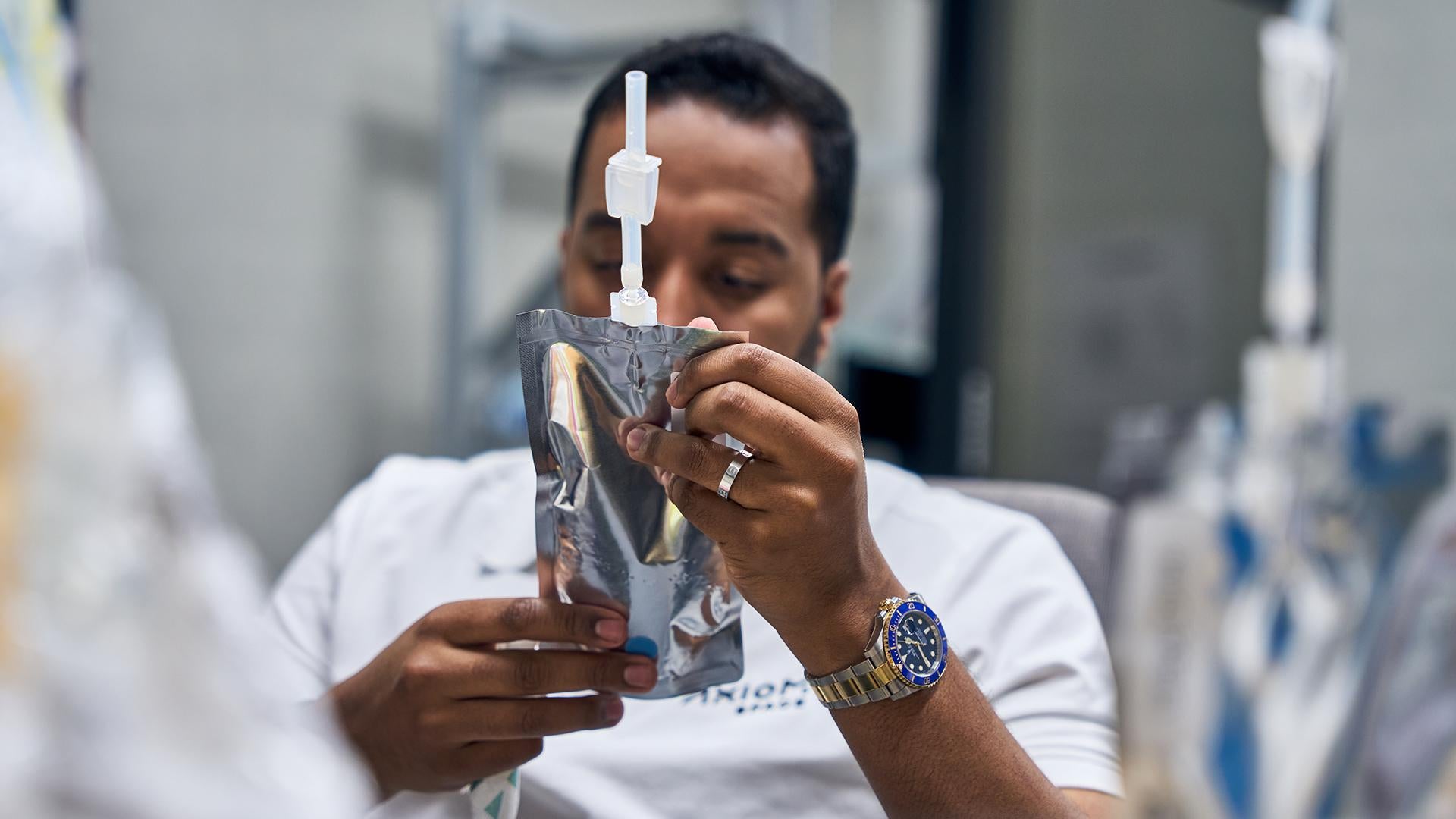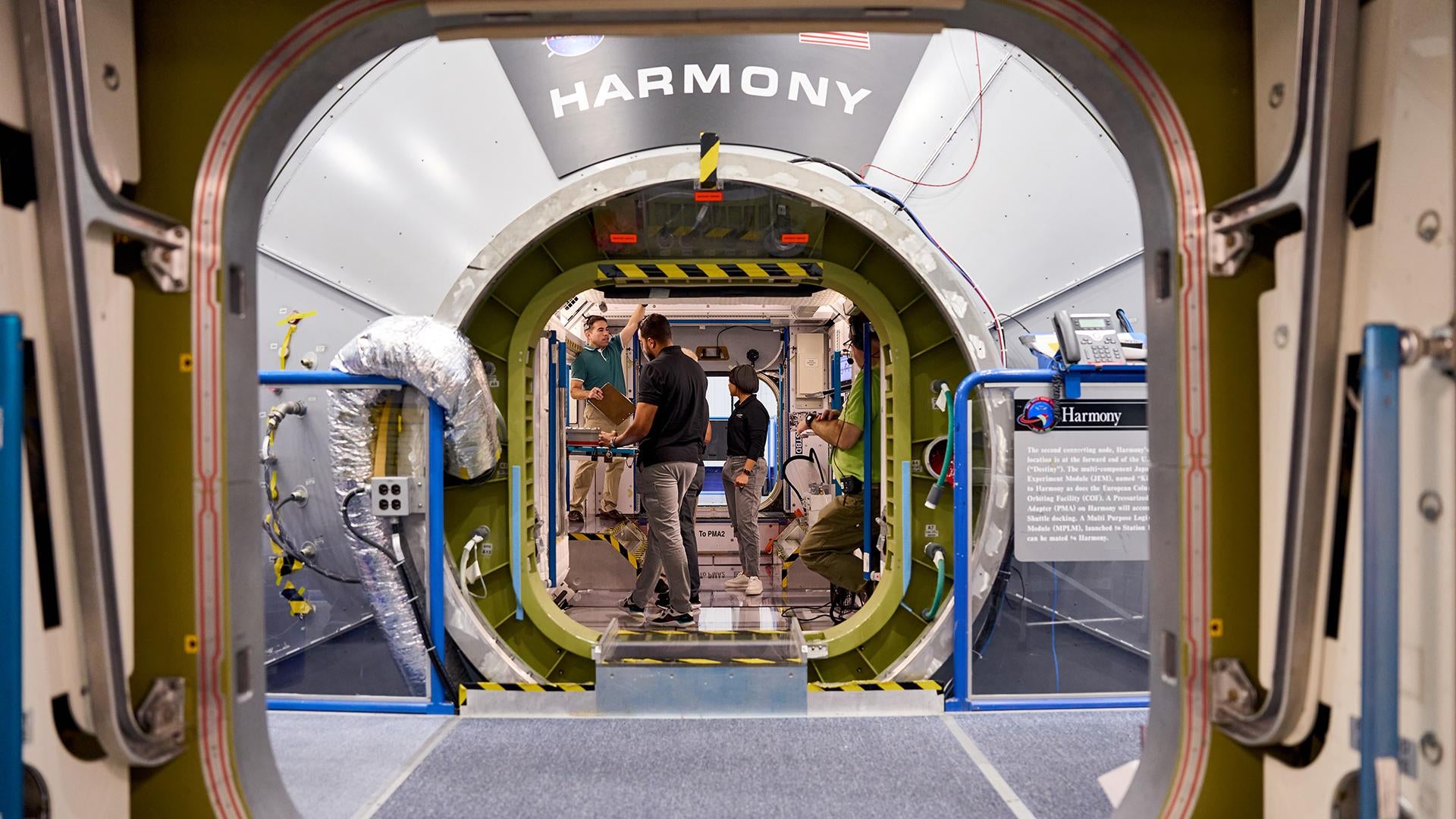Behind the Scenes: What It’s Like to Train Private Astronauts
KBR employees provide training for operations conducted on board the International Space Station (ISS) for private astronauts from commercial companies and other non-NASA personnel to support NASA’s strategic goal of fostering a low-Earth orbit (LEO) economy.
Last year, KBR provided astronaut training and medical operations support for the Axiom Mission 1 (Ax-1) crew, the first-ever all private astronaut mission (PAM) to the ISS. As part of a Space Act Agreement, KBR, alongside its teammates, is currently the sole provider for PAM training at NASA’s Johnson Space Center.
Last fall, the four-person, multinational crew began training for Axiom Space’s second private mission to the space station, known as Axiom Mission 2 (Ax-2). Launched on May 21, 2023, the Ax-2 astronauts plan to spend eight days working and living on the station conducting more than 20 different experiments.
Training Summary
In preparation for their mission, the private astronauts started with the Minimum Required (MR) module training, which equips them with the necessary skills to carry out daily tasks on the space station and ensures the safety of both the crew and the vehicle.
The next training level is Minimum Required Escort (ME), which enhances mission safety, reduces disruption to space station operations, and increases the autonomy of the private crew while the PAM and its vehicle are docked.
Additionally, KBR trained Ax-2 crew members how to handle space station-related and medical emergencies. Learning these skills prepared the private astronauts to handle potential issues during space flight, such as rapid depress, ammonia release and fire.
The training received by the Ax-2 crew members included education on multiple space station systems to ensure they live comfortably during their stay. This instruction involved learning about food preparation, the space station habitat, sleeping quarters and hygiene. Moreover, the crew learned the daily timeline of activities and where to find items on the station, skills which allow the visiting PAM crew to be self-sufficient and autonomous to the current space station crew while onboard.
The PAM crew will perform experiments using various payloads while on the space station. KBR trained the crew on operations for payloads provided by Axiom Space, NASA’s Marshall Space Flight Center, the European Space Agency (ESA), and the Japan Aerospace Exploration Agency (JAXA).
KBR Chief Training Officer Grant Slusser Q&A
KBR Chief Training Officer Grant Slusser is responsible for delivering this mission-critical training to both space station and PAM crew members. Slusser has more than 36 years of experience working on human spaceflight programs and began his career in 1987 on Space Shuttle communications.
“My first mission to train was STS-26 for the return to flight. From there, I moved to the flight controller world for 10 years and then back to communications training for four more years. In 2004 I joined the ExtraVehicular Activity (EVA) team as a trainer and flight controller. In 2018, I was lucky and found a spot in the Chief Training Officer (CTO) group,” shared Slusser.
How many crew members have you trained since you started your career in the Human Space Flight program?
“Throughout my career as a crew trainer, I could not tell you how many crew [members] I’ve trained. I’ve trained crew in simulations, single system trainers, Class I hardware classes, and how to keep the EVA suits healthy and viable. I’ve been part of more than 100 missions in both Shuttle and space station teams. My latest adventures as CTO have allowed me to lead fantastic training teams for two Soyuz missions and one PAM crew (Ax-2). My first Soyuz crew broke the longest duration record and now my second crew is set to break the record again. The latest PAM crew will be greeted on station by my previously trained Soyuz crew.”
What contributions have you made to the training for the PAMs?
“After the first PAM and the lessons learned from that experience, the entire training catalog was reworked. Leading the team that implemented all the changes and working with the instructors and crew to make sure the PAM crew could function safely and effectively (when they arrive on station) was exciting and challenging. As with any crew, how successful they are on orbit will tell us how effective the training was. With what I’ve seen during training of this PAM crew, I’m expecting a huge success.”
What is your opinion of the PAM in general – what are we helping them achieve, and what is the future for those missions?
“I’m very excited to be part of the PAMs. Their success will allow access to space for countries and people who would not have the ability to reach LEO and hopefully beyond. As future missions and modules make it to the space station, this will extend human presence in LEO as NASA continues to the Moon and beyond.”
What else can KBR do to help them succeed?
“The ability to be flexible in the knowledge that is transferred to the PAM crew is essential to the success of the program. KBR has some of the best instructors who will continue to provide outstanding support to any crew going to space. It’s an honor and privilege to be part of such an amazing team.”
What are the key differences between PAM training and space station crew training?
“The key difference is the amount of training they receive to keep the station healthy. Both crews get similar training on how to perform the day-in and day-out activities to allow them to live on station and perform daily tasks and [manage] payloads. The PAM crew gets a crash course focused on activities they will be performing while onboard. The space station crew gets the same type of training and receives training on how to recover the station if any major failures occur, such as a critical power loss or attitude control.”
Grant summed up his love for his job by saying it’s a great day to be in FOD:
“What could be a better job than training astronauts? I was once in a long line at an amusement park and talking to a family with a teenager. After about 30 minutes and getting close to the ride, the teenager asked me what I did for a living. When I told her I train astronauts she replied, ‘You should have led with that!’”







